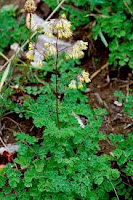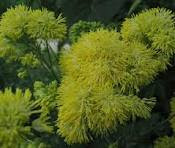LUNGWORT MOSS, OAK MOSS, OAK LUNGWORT, LOBARIA PULMONARIA
Lungwort moss is sometimes confused with the herb lungwort (Pulmonaria officinalis), although they are not at all related. Lungwort moss is a member of the Lobariaceae family of lichens or mosses and grows on tree barks or on rocky surface, although you find it rarely on the latter. It doesn’t derive nutrients from the tree it lives on but from the sun. It is found throughout the northern hemisphere, but is becoming rare and is threatened in Switzerland because of air pollution and the felling of forests.
Lungwort moss grows on oak, ash, beech, rowan, willow and hazel trees in Europe and is thought to be an indicator of ancient forests. It can also be found on other species of tree. In Britain it is found now in Wales, Scotland and south-west England and the Lake District, but is rarely found in other areas.
In the Renaissance in the Doctrine of Signatures it was believed that plants which resembled parts of the human body would cure the part of the body they closely resembled. Some of these associations appear today to be flights of fancy, but in the case of both lungworts, it has been found that they do in fact have lung healing properties. It has antibiotics in it which act against the bacteria that cause tuberculosis and other lung and chest infections.
The thallus which is the part of the lichen that sticks to the bark of the tree which is its host, has been found to have wound-healing properties, as it has anti-septic actions and has also shown to have anti-ulcer and anti-inflammatory properties. One study has indicated that extracts of the plant are gastro-protective possibly due to its ability to reduce oxidative stress and its neutrophil infiltrates.
In traditional medicine in the Indian subcontinent it is used for haemorrhages and eczema.
“Government and virtues. Jupiter seems to own this herb. It is of great use to physicians to help the diseases of the lungs, and for coughs, wheezings, and shortness of breath, which it cures both in man and beast. It is very profitable to put into lotions that are taken to stay the moist humours that flow to ulcers, and hinder their healing, as also to wash all other ulcers in the privy parts of a man or woman. It is an excellent remedy boiled in beer for brokenwinded horses.”
Lungwort moss is a source of natural dyes, and provides food for slugs and snails, and for caribou and moose too.
It has been combined with coltsfoot or horehound in traditional medicine for effective treatment of bronchitis.












































